This article explains how to add or edit Windows PATH environment variables in Windows 11.
Most programs will default to adding their custom shortcuts to the Windows PATH environment variable.
Some programs will not automatically add to the System Path variables, but let users edit or add to the path so that the program can function correctly.
The System PATH variable is one of the most used variables in Windows. It allows users to run any executable located inside the paths without giving the full path to the executable or the directories to locate.
Users must search for and locate each executable without environment variables or provide full paths and directories of important program files. Environment variables create shortcuts to executables within those paths specified.
How to set path and environment variables in Windows 11
As mentioned, PATH and environment variables create shortcuts to executables and directories. It allows custom programs to be launched and used efficiently in Windows.
Administrator privileges are required to modify the path and environment variables. Below is how to add or edit Windows PATH and environment variables in Windows 11.
First, go to the Windows Settings app. To get to the Settings app, you can use the Windows key + I shortcut or click on Start ==> Settings, as shown in the image below:
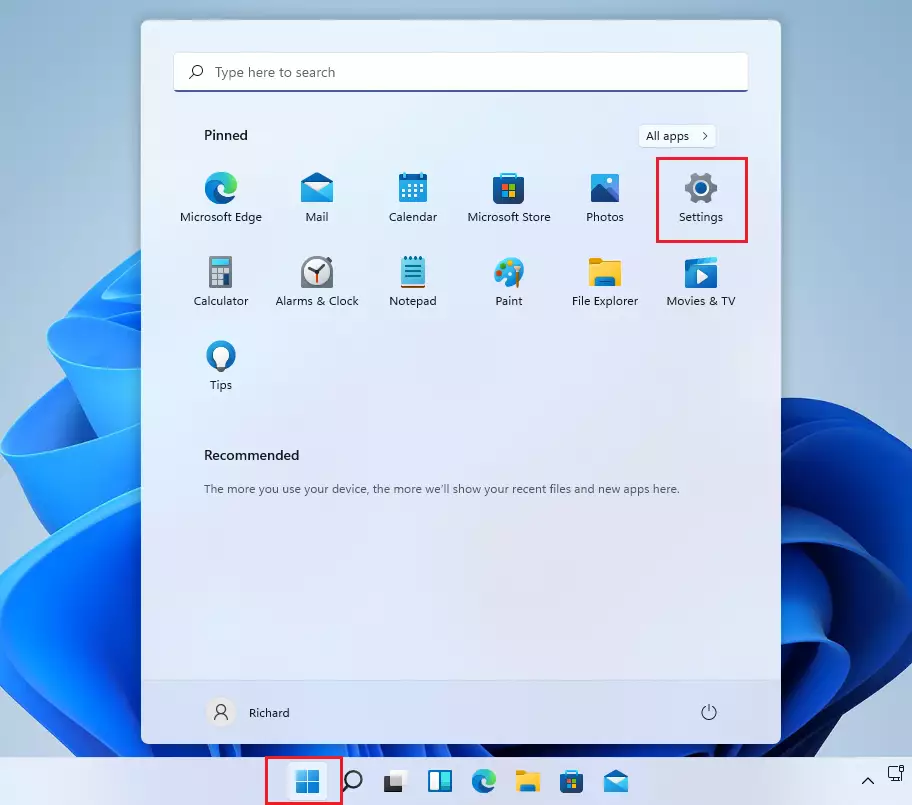
Alternatively, you can use the search box on the taskbar and search for Settings. Then select to open it.
In Windows Settings, click System, and select the About tile on the right pane of your screen, as shown in the image below.
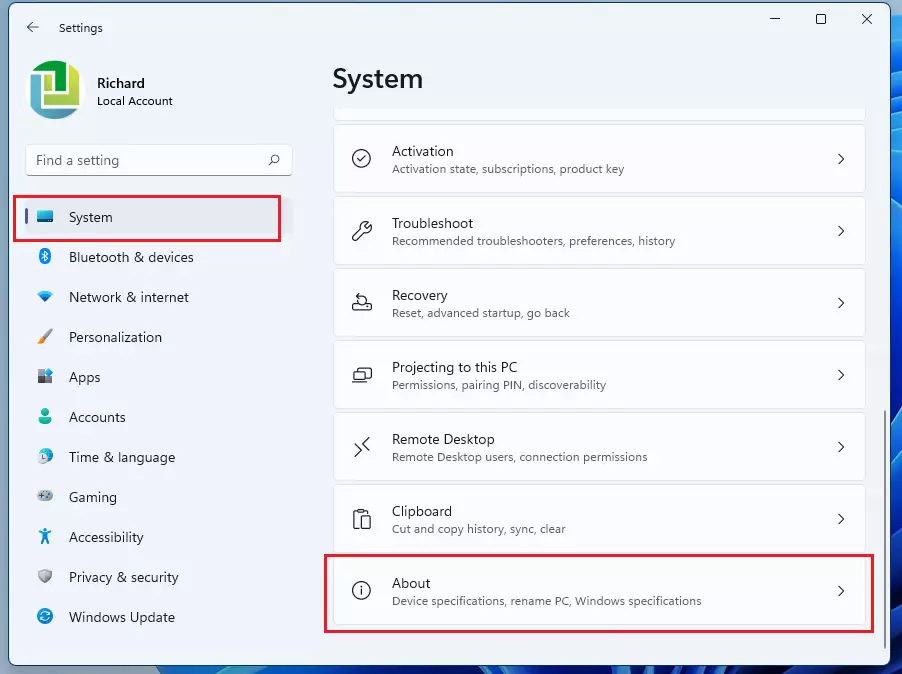
Click the Advanced system settings link on the About screen, as highlighted below.
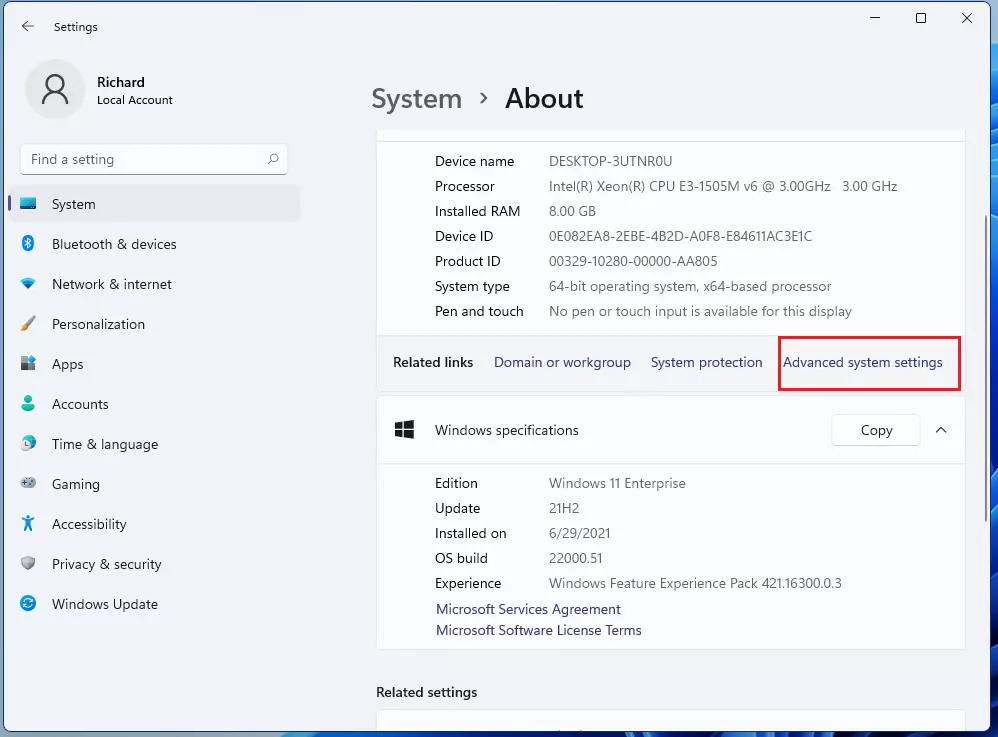
In the System Properties window, click the Advanced tab, then click the Environment Variables button near the bottom of that tab.
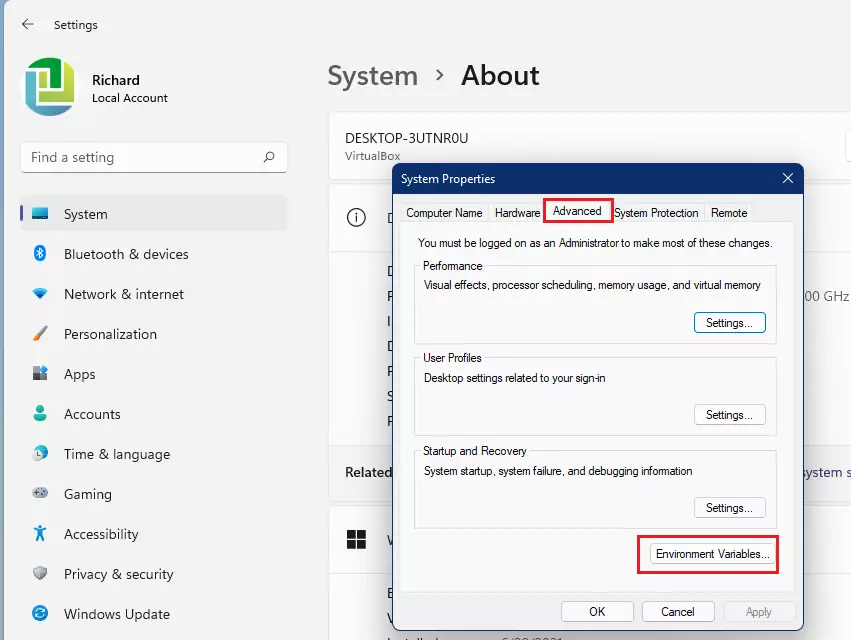
You’ll typically want to add to the System variables so everyone on the System can use it. If you use the User variable, only a user who adds it may use it.
Highlight the Path variable in the System variables section and click the Edit button.
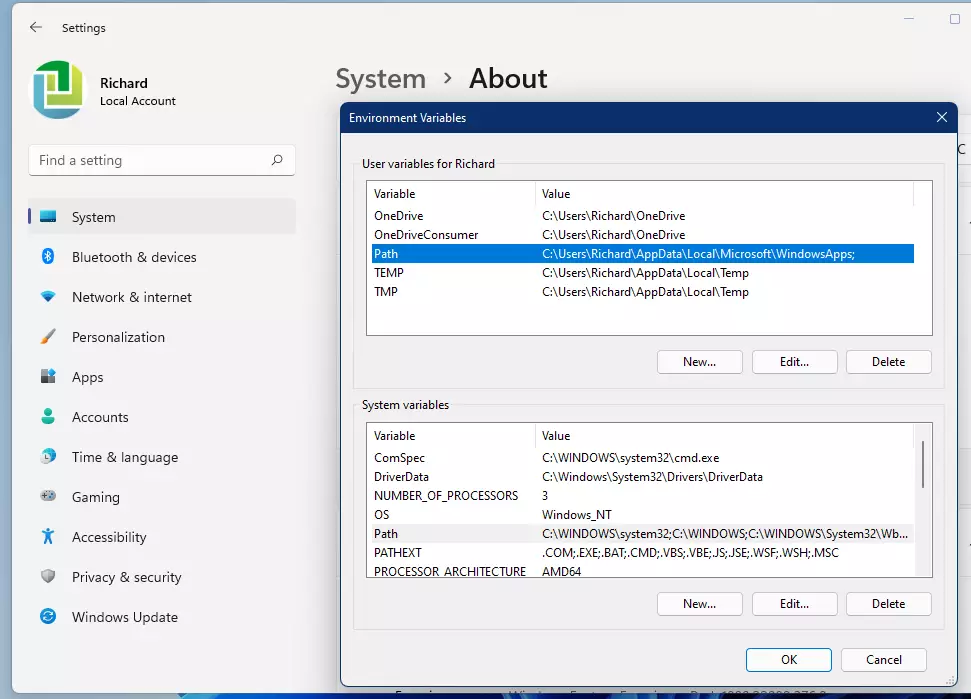
Next, add or modify the path lines with the paths you want the computer to access. Each directory path is separated with a semicolon, as shown below.
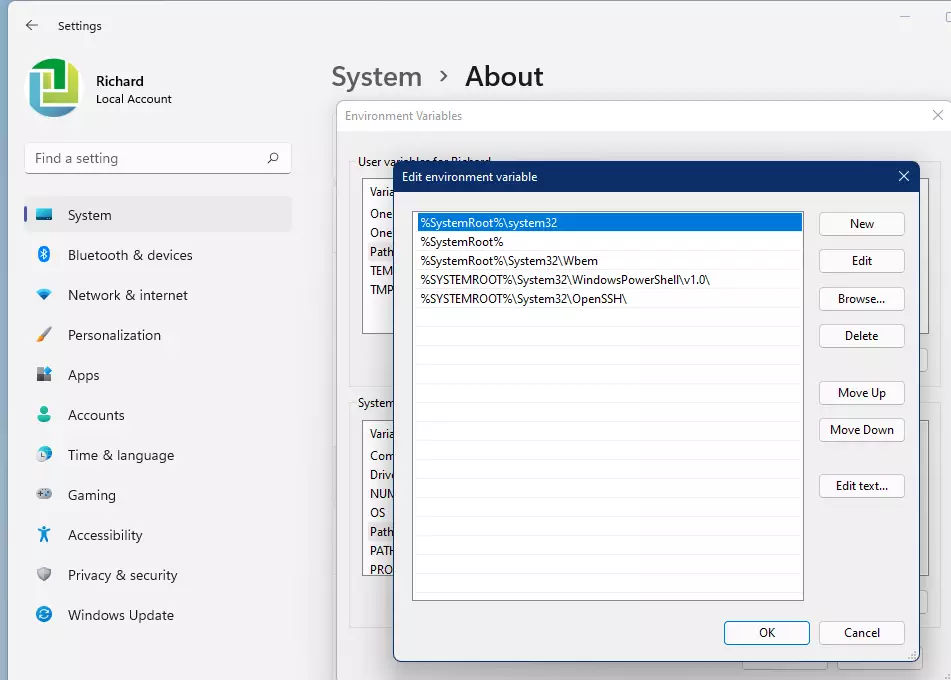
You can click the New button to add new paths or edit to modify the existing path. Delete will delete a path.
If you know the path, simply type it in or copy and paste it. You can also click Browse and navigate to the desired path you want to include in the System path variables.
Each directory path is separated with a semicolon, as shown below.
C:\Program Files;C:\Winnt;C:\Winnt\System32
That should do it.
Conclusion:
- Customizing the Windows PATH environment variables is essential for running programs seamlessly.
- Following the outlined steps, users can efficiently add or edit the PATH variables in Windows 11.
- Ensuring proper PATH configuration can save time and streamline the execution of various applications.
- Remember to use administrator privileges when making changes to system-wide variables.
- Regularly review and update your PATH variables to maintain optimal system performance.

Leave a Reply